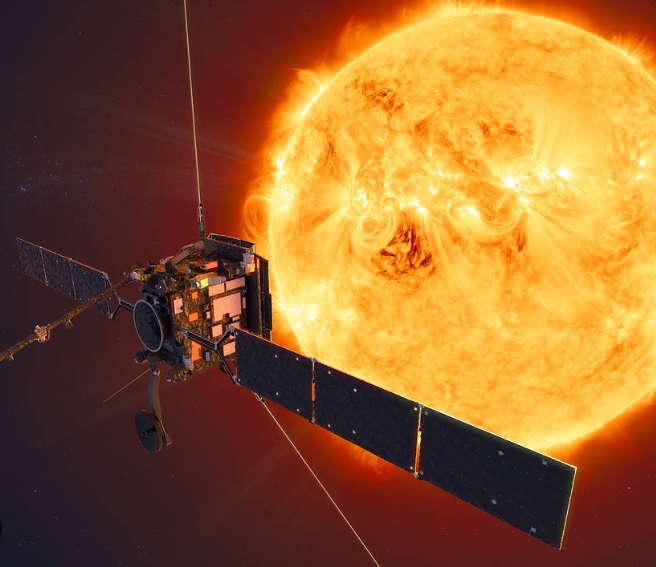In the realm of space exploration, the Sun has always been a captivating celestial entity. Its immense energy, magnetic fields, and ever-changing surface provide valuable insights into the dynamics of our solar system. One of the remarkable missions dedicated to studying the Sun up close is the Aditya-L1 mission. In this article, we will delve into the significance, objectives, and expected outcomes of this extraordinary venture.
Table of Contents
Introduction: Exploring the Sun’s Mysteries
The Sun, a colossal ball of hot plasma, has held humanity’s fascination for eons. Its continuous nuclear fusion reactions produce the light and heat necessary for life on Earth. However, its surface is a hub of magnetic activities that can trigger solar flares, coronal mass ejections, and geomagnetic storms with potential impacts on our planet. Understanding these phenomena is crucial for space weather prediction and safeguarding our technological infrastructure.
The Aditya-L1 Mission Unveiled
The Aditya-L1 mission, spearheaded by the Indian Space Research Organisation (ISRO), aims to send a spacecraft to the first Lagrange point (L1) – a unique location where the gravitational forces of the Earth and the Sun are in equilibrium. This strategic position allows continuous monitoring of the Sun without Earth’s interference.
Objectives of the Aditya-L1 Mission
- Studying the Solar Corona: The mission intends to scrutinize the Sun’s corona – the outermost layer visible during a solar eclipse. Its extreme temperatures and dynamic nature challenge conventional understanding.
- Unraveling Solar Wind: Aditya-L1 will investigate the origin and acceleration of solar wind, which consists of charged particles ejected from the Sun and influences space weather.
- Monitoring Solar Flares: The spacecraft will observe solar flares in high resolution, aiding in the prediction of potentially disruptive space weather events.
Unprecedented Solar Observations
It’s plans to capture high-resolution images of the solar corona in various wavelengths. This data will enable scientists to decipher the corona’s magnetic configuration, helping predict solar activities with greater accuracy.
Equipping for Solar Exploration: Payloads and Instruments
The mission carries an ensemble of payloads and instruments, including the Visible Emission Line Coronagraph (VELC), the Solar Ultraviolet Imaging Telescope (SUIT), and the Aditya Solar Wind Particle Experiment (ASPEX). These instruments will collectively provide multi-wavelength observations of the Sun.
Journey to the First Lagrange Point (L1)
The spacecraft’s journey to the L1 point involves intricate orbital maneuvers and gravitational assists to ensure precise positioning. This endeavor showcases human ingenuity in navigating the complexities of space.
Expected Discoveries and Contributions

It is anticipated to shed light on the mechanisms heating the corona to millions of degrees, potentially revolutionizing our understanding of stellar atmospheres. The insights gained will have implications beyond our solar system.
Advancing Space Weather Prediction
Accurate space weather forecasting is crucial for satellite operations, communication systems, and power grids. It’s data will enhance our ability to predict and mitigate the impacts of solar-driven geomagnetic disturbances.
Aditya-L1 vs. Previous Solar Missions
While previous solar missions like the Solar Dynamics Observatory (SDO) and the Parker Solar Probe have provided valuable data, It’s vantage point offers continuous observation, enabling a comprehensive view of solar processes.
International Collaborations and Contributions
The mission is not only a national effort but also welcomes international collaborations. Space agencies and researchers from around the world contribute expertise and resources to achieve collective scientific goals.
The Road Ahead: Launch and Mission Timeline
As of now, the mission is in its advanced stages of development. The launch vehicle selection, spacecraft integration, and pre-launch tests are underway, setting the stage for a remarkable journey to the L1 point.
Overcoming Challenges in Solar Observation
Studying the Sun’s corona is challenging due to the blinding brightness of the solar disk. However, advanced instruments and innovative techniques developed for Aditya-L1 will overcome these obstacles.
FAQ
When is the Aditya-L1 mission expected to launch?
2nd September 2023
How will Aditya-L1 contribute to space weather prediction?
It will provide crucial data for understanding solar activities, enhancing our ability to predict space weather events accurately.
What is the significance of the L1 Lagrange point?
The L1 point offers a stable position for continuous solar observation, unaffected by Earth’s atmosphere.
Can Aditya-L1’s observations impact Earth’s climate predictions?
While It focuses on solar dynamics, its findings might indirectly contribute to our understanding of certain solar influences on Earth’s climate.
How does Aditya-L1 compare to the Parker Solar Probe?
Both missions aim to study the Sun, but Aditya-L1 focuses on continuous observation from the L1 point, while Parker Solar Probe performs close solar flybys.

